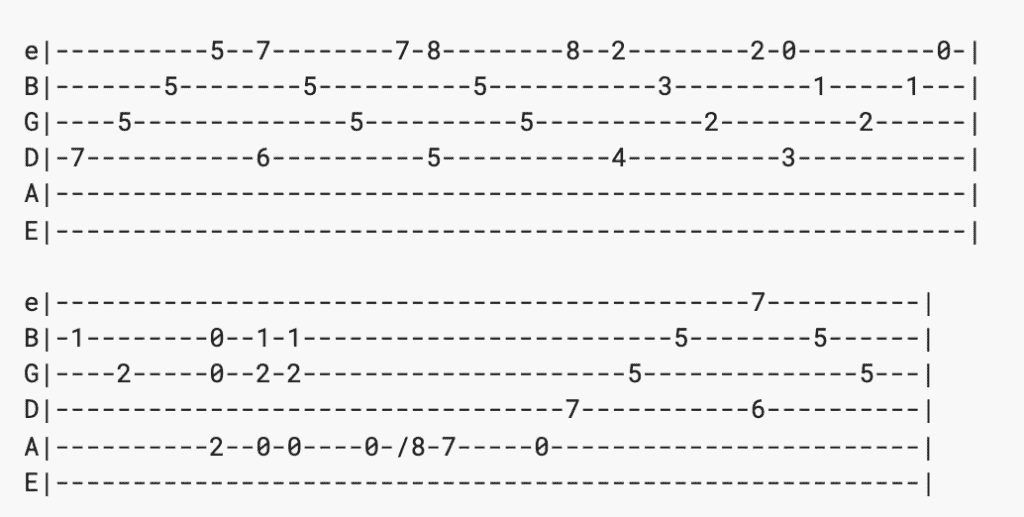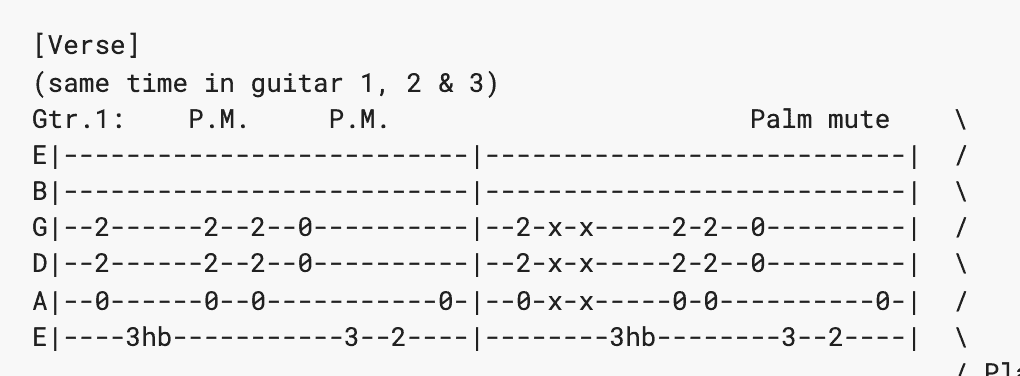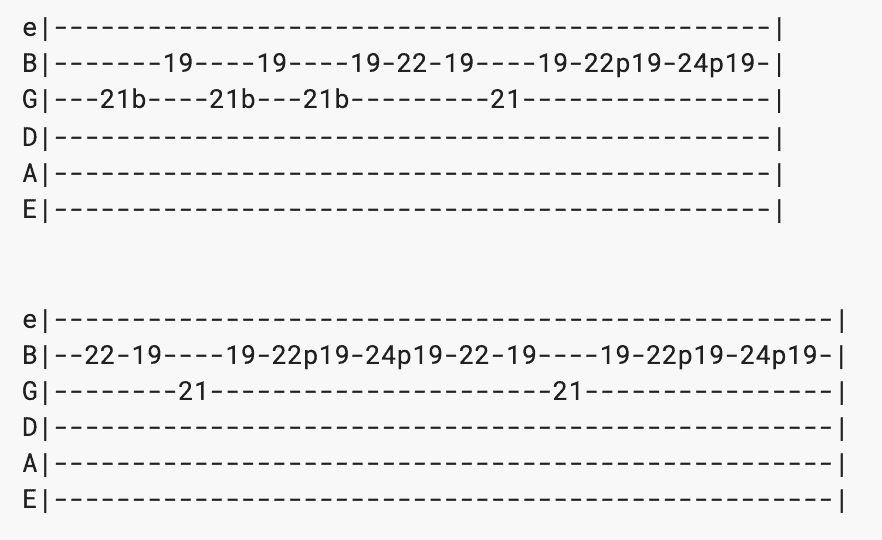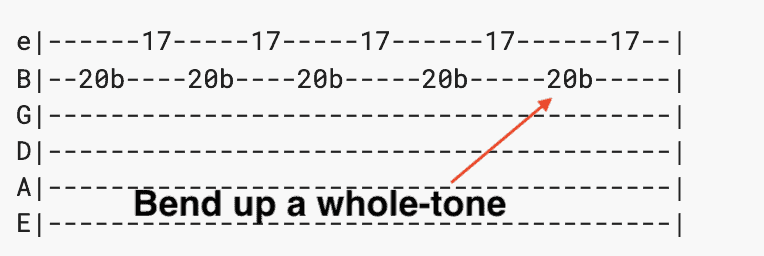There are some terms guitarists use that may seem confusing to people outside of the community, or maybe, you just started learning how to play the guitar and you’ve heard some of these words. One example that strikes me is the difference between distortion, gain, and overdrive, which are all quite similar but ultimately different.
Another two examples are the “guitar lick” and “guitar riff.” These can sometimes be used interchangeably but they’re not actually the same. So what’s the difference between them then?
The main distinction between a guitar lick and a guitar riff lies in their musical completeness and thematic relevance. A lick is a piece of music without a specific theme, and repeating it doesn’t reference a song or composition. A riff, however, is thematic and usually part of a full song.
A guitar riff has a thematic element to it that’s connected to a musical idea or a song. It’s forever associated with that song, whereas a guitar lick is on its own, and no one will associate the lick with a particular song. One of the best examples of a guitar riff is the opening to “Sweet Child O’ Mine” or “Iron Man” from Black Sabbath.
What Is A Guitar Lick?
As I’ve said in another article, a guitar lick is a collection of notes that’s incomplete and is not thematic.
For instance, a guitar lick can be part of a guitar solo, or maybe even just the end of a guitar riff.
In other words, a guitar lick is a phrase that usually isn’t repeated on its own, it’s merely a stylized collection of notes, an incomplete musical idea, that often accompanies the main riff.
What’s A Guitar Riff?
A guitar riff, on the other hand, is a finished musical idea, that can be repeated over and over again, with slight alterations. It’s a musical theme.
A great way to illustrate the meaning of a guitar riff is guitar shops.
If you ever walk into a Guitar Center or some other store that sells guitars, you can hear guitarists playing guitar riffs from very famous and very popular songs.
A classic one is “Stairway to Heaven.” Whenever someone plays the opening riff to “Stairway to Heaven,” everyone knows what song is being played because it’s a reference to the actual song, itself.
It’s a musical idea, a riff, or a theme, that’s inseparable from a song that’s already been written.
You can see what the classic “Stairway to Heaven” riff looks like below:

Another example is Nirvana’s “In Bloom.” It has one of the most iconic guitar riffs of all time. In fact, no one else has ever come up with a riff like “In Bloom.” It’s completely on its own and inimitable.
The same thing could be said for “Smells Like Teen Spirit.”
You can see what “In Bloom” looks like in tablature below:

A riff is a collection of notes that is complete.
The riff is thematic, and it can be played over and over again as the backbone of a musical idea.
Even though it can be repeated in a different way, for instance, in a different key or with minor variations, the same musical idea persists.
Another example of a classic guitar riff is “Smoke On The Water” from Deep Purple.

It simply isn’t possible to play either of these two riffs without calling back or referencing them.
The collection of notes that make up these riffs are forever associated with the songs created by those two artists.
To further illustrate the differences between a “guitar lick” and a “guitar riff,” we’re going to comb through some more classic songs.
The first one we’ll use is from Guns and Roses, “Welcome To The Jungle.”
“Welcome To The Jungle” from Guns and Roses
In this song from Guns and Roses, there is the main riff of the song, which essentially looks like this:

However, there is a small line, or a lick, at the end of the riff which just spices it up a little bit.
You can see what this looks like here:

This example illustrates the primary difference between a riff and a guitar lick.
The riff is literally the same collection of notes that’s repeated over and over again. It’s a complete musical idea that serves as the basis for the song, or at least the guitar’s main part in that track.
However, the lick at the end of the riff is just a small musical idea that almost freshens up the riff, or makes it slightly different from the main idea.
Both guitars in the song, “Welcome To The Jungle,” have a small lick at the end of the riff that’s meant to introduce the verse where Axl Rose begins singing the first verse of the song.
You can see the lick at the end of Slash’s riff here:

And then you have Izzy Stradlin’s riff which repeats the same riff, albeit slightly different from Slash’s riff, and it also has a guitar lick at the end of it that serves to introduce the first verse.
With all that in mind, however, it’s important to note that a guitar lick doesn’t have to serve the purpose of changing the riff slightly.
A lick can also exist on its own, separate from the riff, but the thing about is that it’s an incomplete musical idea.
More importantly, a riff and a lick are very different from each other in another crucial way.
For instance, a lick can be repeated in two different songs, but because it doesn’t have a thematic element to it, the lick isn’t really associated with either song separately.
Blues and rock are filled with licks.
There are many musical phrases, or licks, that have been repeated many, many times, in different songs, but you don’t really associate the lick with any particular song. It doesn’t have a theme; it’s not a complete musical idea.
Every guitarist has seen the guitar lick where a guitarist will descend or ascend the Minor Pentatonic or Blues scale. You can see this lick all over the music.
Using the example of the Guns and Roses song again, “Welcome To The Jungle,” the following lick, if played on its own, no one really knows what song it comes from, because it’s been repeated in so many other songs in the genre.
Put simply, play the lick below in a guitar shop, and no one will know that it comes from the song, “Welcome To The Jungle.”

There’s a good chance that most people won’t be able to recognize that lick, because, as I’ve already said, it’s been done so many other times before but in different contexts.
But if you play the main riff from “Welcome To The Jungle,” it’s obviously a reference to the classic Guns and Roses song.
It’s a call-back, an allusion, or a reference to a musical idea that people have commonly come to understand is a part of “Welcome To The Jungle.”
Ultimately, guitar licks and guitar riffs serve entirely different purposes in a song or a track.
A guitar lick is just a fancy little line, a run of notes, that’s stylized and adds more flavor or melody to a particular part of the song.
Whereas a guitar riff is a central idea. It’s associated with the song, and any time someone plays it, it’s instantly recognizable as having come from that other song.
You could really go on and on with riffs and licks in popular music, especially during the rock era of the past.
To really hammer this point home, I’m going to use another example that was a big part of Kirk Hammet’s toolbox.
Kirk Hammett’s Licks
It’s not uncommon for a guitarist to use the same licks in some of their guitar solos (more on those in my guide), over and over again, because it’s become a tool that they use to stylize their guitar solos or their guitar parts.
Kirk Hammett is a great example of this because he has been using similar licks, in different guitar solos, for years.
For example, in Metallica’s song, “Hit The Lights,” from the album, Kill’em All, Kirk plays a line at the start of the track that he has used in so many other songs, albeit in slightly different ways.

However, because it’s merely a guitar lick and not a guitar riff, you don’t associate it with one song or another.
It goes without saying that nearly every other guitarist does the same thing. They play similar licks, but maybe with slight alterations, in other songs and solos.
Another great lick you can hear in many guitarists’ songs is the following:

If you’re familiar with guitar playing and guitar solos, you’ll have seen this same lick played in so many other songs and tunes.
For example, you can see this very same lick from people like Stevie Ray Vaughn, as well as from people like Shawn Lane.
Check out the song, “So What,” from the band MVP, and you can hear Shawn Lane playing the same lick at the 6:15 mark all the way up to 6:20.
It’s a very common blues lick that has been repeated over and over again in so many other songs.
Kirk Hammett used this very same lick in his guitar solos a lot as well.
For example, if you check out the song, “Sad But True,” from Metallica’s 1991 record, The Black Album, you can hear Kirk Hammett use the same lick from 4:11 until 4:12.
You can see this phenomenon all over popular music, but especially in the blues and in rock guitar, where guitarists have been reusing similar licks over and over again for years.
I have no doubt the same phenomenon can be seen with other instruments as well, such as the drums, flute, saxophone, and on the bass guitar.
Frankly, human beings are copycats, and we learn from each other by looking at what others are doing, imitating it initially, and then ultimately coming up with our own unique style in a way that merely references the old way.
Essentially, this is how we come up with new ideas. We mix some of the old with the new to come up with something entirely different.
Copyright Infringement
This article probably helps you understand why there are almost never copyright infringement lawsuits filed over guitar licks rather than guitar riffs. A lick is something that no one really owns because it doesn’t reference a musical idea that someone else created.
A lick has been repeated so many different times by other guitarists and musicians that no one owns it. No one has the exclusive right to it, because it doesn’t call back to a specific creation.
A guitar riff, on the other hand, is a completely different animal, and there have been many lawsuits filed against artists who have unlawfully used another person’s work without citing them. Case-in-point, the classic riff from “Stairway to Heaven,” from Led Zeppelin.
In case you don’t know, Jimmy Page actually lifted the opening riff from the song from a band they used to tour with back in the day called Taurus. Ultimately, their two songs turned out to be entirely different, but the guitar riff was the same.
Other Articles You May Be Interested
- What Is A Guitar Lick – Guitar Licks Explained
- What’s the Difference Between Chords & Tabs? [EXPLAINED]
YouTube Video
Conclusion
All-in-all, I hope this helped illustrate the difference between guitar riffs and licks because they’re quite different from each other.
Ultimately, the terms “licks” and “riffs” are just ways of describing a musical idea.
Licks are incomplete musical phrases that can be used in different musical contexts without alluding to a particular song, whereas a guitar riff is a complete musical phrase that almost always references a specific song.
A guitar riff almost always calls back to the same song.

 Written By :
Written By :